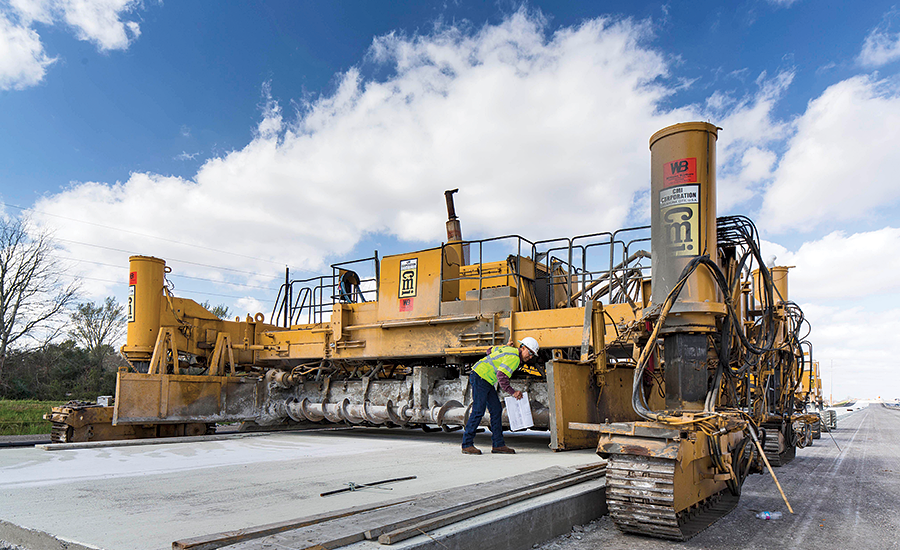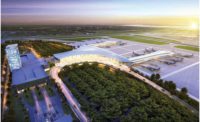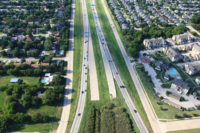Energy continues to dominate the conversation in Texas and Louisiana construction, with the top four projects on this year’s ENR Texas & Louisiana Top Starts list all being energy related and in the billions of dollars.
|
Click Here to View the 2016 Top Project Starts in Texas & Louisiana |
Cheniere Energy Inc.’s Corpus Christi Liquefaction Project Trains 1 and 2, valued at $11.5 billion, tops this year’s ranking. According to the company’s website, the first train is expected to start operation as early as 2018.
That job is followed on the list by three other energy projects: Sasol’s $8.9-billion Ethane Cracker and Derivatives Complex in Westlake, La.; Freeport LNG’s $2-billion Liquefaction Project Train 3 on Quintana Island in Texas; and Yuhuang Chemical Inc.’s $1.85-billion New Methanol Plant in Vacherie, La.
The top 25 project starts in the region represent a total of $18.26 billion worth of work from calendar year 2015, down more than $10 billion from $28.94 billion in 2014.
Projects on this ranking are limited to those that ENR Texas & Louisiana could independently confirm.
Oil-Related Impacts
With oil prices remaining weak, starts on future energy and related projects are slowing down.
“It’s a no-brainer that the new commercial office market is at a standstill in Houston with oil prices where they are,” says Brian Cook, vice president for Hoar Construction’s Texas division. “The large loss of jobs and reduction in new job creation in Houston will likely have lasting effects that impact many of our other market sectors, such as retail and high-rise multifamily.”
Other construction markets, such as health care, may avoid a negative impact from lower oil prices.
“The health care market is entering a new cycle of expansion with both new facilities and large renovations,” notes Filo Castore, principal at DLR Group.
Several health care projects dot the Top Starts list, including two within the top 10: No. 5, a $650-million renovation and expansion at Memorial Hermann-Texas Medical Center facility in Houston; and, No. 7, the $506-million Texas Children’s Hospital Pediatric Tower Expansion, also at the Texas Medical Center.
“The only private sectors doing relatively well are retail and hospitality,” adds Castore. In Houston, he says, “a lot of hotels were commissioned [ahead of the 2017] Super Bowl. With all indications pointing at a more advantageous cost of construction for the next 12-18 months, we may see more hotels being completed or underway.”
Workforce availability remains an issue, especially for specialty contractors, adds Meloni McDaniel, president and CEO at Texas contractor association TEXO. “Some members are turning down work because there just isn’t the workforce to keep up with the demand. Things have slightly tapered off, but we are still booming, especially in North Texas,” and she sees that out through 2018, then a leveling out.
Road construction remains strong, with five projects in the mix, including the $581-million 183 South project in Austin, at No. 6, and the Interstate-49 North Bridge (Segment K) Phase 2 in Shreveport, La., at No. 20.
But Louisiana is bracing for some more slowdowns. “With state budgets being tightened, we see a decrease in construction statewide,” says Sarah Richard, ASCE Acadiana branch president.
Meanwhile, “the 2015 Texas legislative session [resulted] in a tremendous amount of capital funding for building construction projects,” says Phil Thoden, president and CEO at Associated General Contractors’ Austin Chapter, noting lawmakers’ approval of roughly $1.7 billion for state building projects in 2016-2017.
The Texas Legislature approved a further $3.1 billion for construction projects at the state’s public universities in 2016 and 2017, Thoden adds. “Between the Texas Facilities Commission and tuition revenue bond university funding, nearly $5 billion in new building construction work is coming online,” he says.
Despite slowdowns on energy, residential and office projects, these signs point to forthcoming opportunities in health care, government and education.
“We are seeing more master plans [moving forward] simultaneously than I have seen in decades,” says Diane Osan, CEO with architectural firm FKP. “This is a great harbinger of what may come—more work for the construction industry.”





Post a comment to this article
Report Abusive Comment